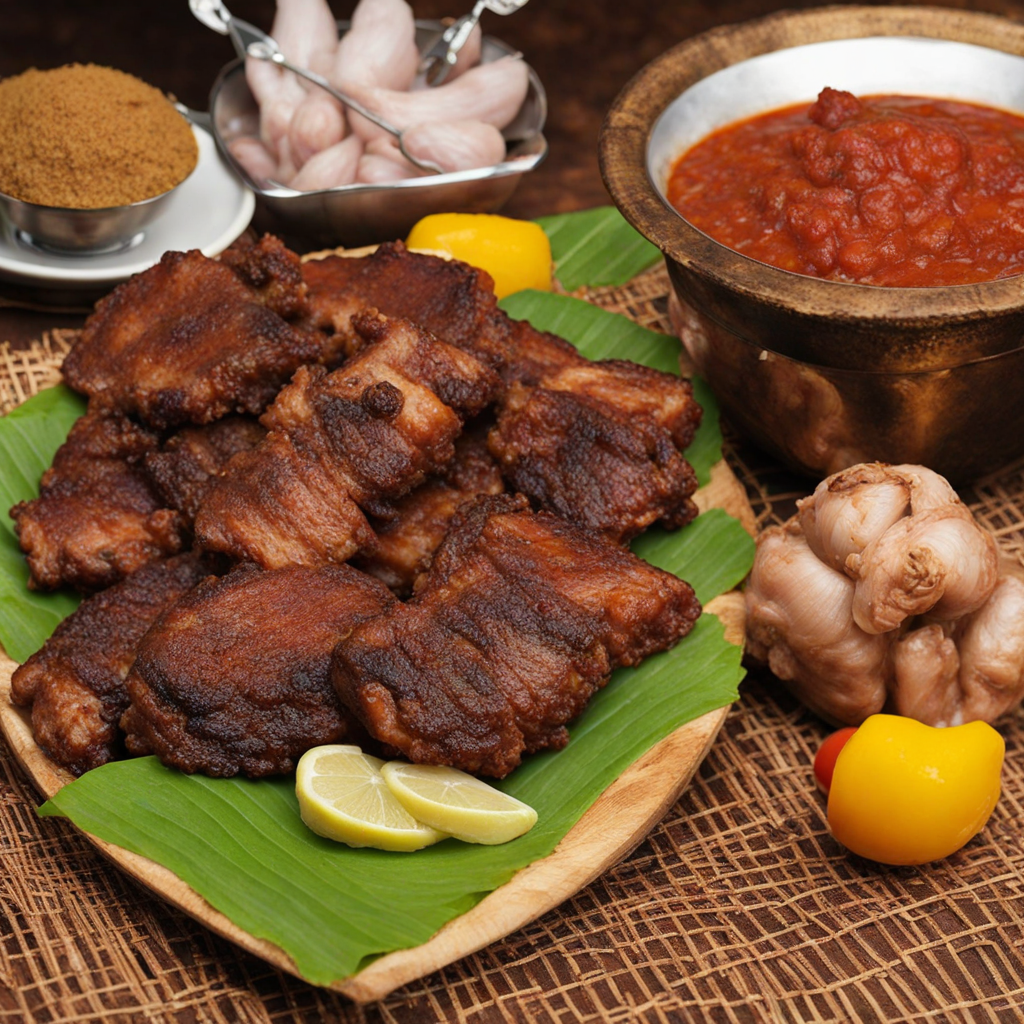G-nuts sauce
G-nuts sauce, a delightful culinary gem from Uganda, is a rich and creamy concoction made primarily from groundnut paste, which is derived from roasted peanuts. The sauce boasts a nutty flavor profile that is both savory and slightly sweet, providing a unique twist to traditional Ugandan dishes. Its smooth texture complements various ingredients, making it an excellent accompaniment to staple foods like matoke (steamed green bananas), posho (maize porridge), and even grilled meats. The sauce not only enhances the overall taste but also adds a satisfying creaminess that elevates each bite. The preparation of G-nuts sauce involves roasting peanuts until they achieve a deep golden color and then grinding them into a fine paste. This paste is often mixed with a blend of spices, such as garlic, ginger, and chili, which infuse the sauce with an aromatic depth that excites the palate. Some variations might incorporate vegetables or herbs, adding an extra layer of flavor and nutritional value. The versatility of G-nuts sauce allows it to be used as a dip, a marinade, or a base for stews, making it a staple in many Ugandan households. Exploring G-nuts sauce offers food enthusiasts a chance to experience the authentic flavors of Ugandan cuisine. The sauce not only showcases the country's agricultural bounty, particularly its groundnuts, but also reflects the communal nature of Ugandan meals where sharing and enjoying food together is central to the culture. As you savor each bite, you'll discover the warmth and hospitality that Ugandan cuisine embodies, making G-nuts sauce a must-try for anyone looking to expand their culinary horizons.
How It Became This Dish
The History of Binyebwa: Uganda's Culinary Treasure Binyebwa, often referred to as "the food of the gods" in Uganda, is a traditional dish made primarily from the dried leaves of the African eggplant (Solanum aethiopicum). This vegetable, known locally as "nkatta," is deeply rooted in Ugandan cuisine and culture, playing a vital role in the daily lives of many Ugandans. To fully appreciate Binyebwa, it is essential to delve into its origins, cultural significance, and the evolution of this cherished dish over time. #### Origins The history of Binyebwa is intertwined with the agricultural practices of Uganda, which has a rich biodiversity and a climate suitable for growing a variety of crops. The African eggplant, native to Africa, has been cultivated for centuries, with evidence suggesting its use dating back to ancient times. The indigenous people, particularly the Baganda and Basoga, have utilized the leaves and fruits of this plant not only for nutritional purposes but also for their medicinal properties. The preparation of Binyebwa involves harvesting the leaves, which are sun-dried and then cooked to create a flavorful stew. The use of dried leaves is significant, especially in regions where fresh vegetables may not be available throughout the year. The drying process preserves the nutrients and flavor, ensuring that even in the dry seasons, families can enjoy this dish. #### Cultural Significance Binyebwa is more than just a meal; it is a symbol of community, tradition, and resilience. In Ugandan culture, food plays an integral role in social gatherings, ceremonies, and communal life. Binyebwa is often prepared during important celebrations, family gatherings, and religious events, serving as a unifying dish that brings people together. In many Ugandan households, Binyebwa is a staple food that showcases the connection between people and the land. It reflects the agricultural heritage of the communities, where farming is not just a means of survival but also a way of life. The act of preparing Binyebwa is often a communal activity, with family members gathering to wash, dry, and cook the leaves, fostering bonds and passing down culinary skills from one generation to the next. Moreover, Binyebwa holds a special place in the traditional Ugandan diet. Rich in vitamins and minerals, the dish contributes to the nutritional well-being of families. It is often served with staple carbohydrates such as matoke (steamed green bananas), posho (maize porridge), or millet, creating a balanced meal that reflects the resourcefulness of Ugandan cooking. #### The Evolution of Binyebwa Over the years, Binyebwa has undergone various transformations, influenced by changing agricultural practices, globalization, and the influx of different culinary traditions. In the past, the dish was prepared primarily in rural settings, with families relying on their gardens for fresh ingredients. However, urbanization has led to a shift in dietary patterns, with many people moving to cities and relying on market-bought ingredients. In urban areas, Binyebwa has adapted to contemporary tastes and lifestyles. While traditional methods of preparation are still cherished, there has been an emergence of modern interpretations of the dish. Chefs and home cooks alike are exploring innovative ways to incorporate Binyebwa into a broader range of dishes. For instance, Binyebwa is sometimes blended into soups, mixed with other vegetables, or served alongside grilled meats, catering to the diverse palates of the urban population. Additionally, the growing awareness of health and wellness has increased the popularity of Binyebwa, particularly among those seeking plant-based and nutritious food options. With the rise of the global health movement, traditional dishes like Binyebwa are being celebrated for their nutritional value and health benefits, leading to a resurgence of interest in indigenous ingredients and cooking practices. #### Binyebwa Today Today, Binyebwa is recognized not only as a beloved traditional dish but also as a culinary ambassador of Ugandan cuisine on the global stage. With the advent of social media and food blogs, many Ugandan chefs and home cooks are sharing their recipes and stories, showcasing the beauty and richness of Binyebwa to a wider audience. This has sparked interest from people around the world who are eager to explore authentic Ugandan flavors. Festivals and culinary events in Uganda often feature Binyebwa, allowing visitors to engage with the culture through food. These gatherings offer a platform for chefs to demonstrate traditional cooking techniques while also experimenting with modern presentations. Through these celebrations, Binyebwa continues to evolve, retaining its roots while embracing new influences. #### Conclusion Binyebwa is more than just a dish; it is a reflection of Uganda's history, culture, and the resilience of its people. Rooted in tradition yet adaptable to modern influences, Binyebwa embodies the spirit of communal living and the importance of agriculture in Ugandan society. As more people around the world discover this culinary treasure, it serves as a reminder of the rich tapestry of flavors and stories that define Uganda's culinary heritage. In a world increasingly dominated by fast food and convenience, Binyebwa stands as a testament to the enduring power of traditional cooking. It invites us to slow down, appreciate the ingredients, and celebrate the connections forged through the act of sharing a meal. Whether enjoyed in a bustling city or a quiet village, Binyebwa remains a beloved symbol of Uganda's culinary identity, nourishing both body and soul.
You may like
Discover local flavors from Uganda







